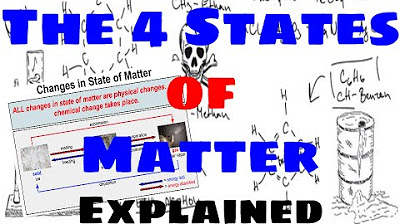Introduction to Acceleration with Prius Brake Slamming Example Problem
Summary
TLDRIn this educational video, Mr. P teaches the concept of acceleration using the Flipping Physics format. The class begins with the definition of acceleration as the change in velocity over time, represented by 'a'. The students, Billy and Bobby, engage in a discussion to understand the concept of 'delta', which signifies the difference between final and initial values. They explore the dimensions of acceleration in SI units, leading to the conclusion that acceleration is measured in meters per second squared (m/sec^2). The lesson continues with an example problem involving a car stopping due to an obstacle, emphasizing the importance of considering both magnitude and direction in acceleration. The students learn to convert units and apply the formula for acceleration to solve the problem, highlighting the need for careful unit conversion and attention to detail.
Takeaways
- 📚 The symbol for acceleration is 'a', and it's calculated as the change in velocity (delta v) over the change in time (delta t).
- 🔍 'Delta' represents the difference between final and initial values, a concept that applies to various physics calculations.
- 🧮 Acceleration is expressed in meters per second squared (m/sec^2), which is derived from the units of velocity change over time change.
- 🌟 The script humorously mentions alternative units for acceleration like km/hr^2 or furlongs/fortnight^2, emphasizing the standard use of m/sec^2.
- 🚗 An example problem involves calculating the acceleration of a car that stops from 36 km/hr in 1.75 seconds, highlighting the application of the concept.
- 🔄 The importance of converting units is stressed when calculating acceleration, ensuring that velocity is in meters per second (m/sec).
- 🤓 The script corrects a mistake in the example problem, emphasizing the need to use the change in velocity (final minus initial) in calculations.
- 📉 The final velocity in the example is zero because the car stops, which is a critical piece of information for calculating acceleration.
- ⚖️ The correct calculation of acceleration in the example results in -5.7 m/sec^2 East, indicating a decrease in velocity and the direction of the acceleration.
- 📝 The script concludes with advice to be careful and methodical in physics problem-solving, underlining the importance of attention to detail.
Q & A
What is the formula for acceleration as described by Mr. P.?
-The formula for acceleration is a = delta v / delta t, where delta v represents the change in velocity and delta t represents the change in time.
How do you calculate the change in velocity?
-The change in velocity (delta v) is calculated as the final velocity minus the initial velocity. In this case, delta v = velocity final - velocity initial.
What are the SI units for acceleration?
-The SI units for acceleration are meters per second squared (m/sec^2), which can also be written as m/sec/sec.
Why does Mr. P. emphasize the need for both magnitude and direction in acceleration?
-Acceleration, like velocity and displacement, is a vector quantity, meaning it has both magnitude (the value) and direction. It’s important to include both when solving physics problems to provide a complete answer.
How does Billy simplify the dimensions for acceleration?
-Billy explains that since acceleration is velocity (m/sec) over time (sec), the result is m/sec^2 after simplifying by multiplying m/sec by 1/sec.
Why did Bo initially get the wrong answer when calculating acceleration?
-Bo initially got the wrong answer because he used the initial velocity of 36 km/hr directly without converting it to the correct SI units (m/sec). This caused a dimensional mismatch in the calculation.
How was the velocity converted from km/hr to m/sec?
-The velocity was converted by multiplying 36 km/hr by 1000 m/km and dividing by 3600 sec/hr, resulting in 10 m/sec.
What mistake did Bo make regarding the change in velocity?
-Bo mistakenly used 36 km/hr as the change in velocity instead of recognizing that it was the initial velocity. The final velocity was actually 0 since the car came to a stop, so the correct change in velocity was 0 - 10 m/sec.
What was the final correct acceleration value after all corrections?
-The final correct acceleration value was -5.7 m/sec^2, with the negative sign indicating deceleration, and the direction being East.
Why does Mr. P. stress slowing down and writing everything down during problem-solving?
-Mr. P. emphasizes taking time and writing everything down because many students rush through problems and make mistakes. Being careful ensures that important steps, such as unit conversions and correctly identifying variables, are not missed.
Outlines

Cette section est réservée aux utilisateurs payants. Améliorez votre compte pour accéder à cette section.
Améliorer maintenantMindmap

Cette section est réservée aux utilisateurs payants. Améliorez votre compte pour accéder à cette section.
Améliorer maintenantKeywords

Cette section est réservée aux utilisateurs payants. Améliorez votre compte pour accéder à cette section.
Améliorer maintenantHighlights

Cette section est réservée aux utilisateurs payants. Améliorez votre compte pour accéder à cette section.
Améliorer maintenantTranscripts

Cette section est réservée aux utilisateurs payants. Améliorez votre compte pour accéder à cette section.
Améliorer maintenantVoir Plus de Vidéos Connexes

The Four States of Matter - Explained

Lab Equipment - Explained

3. Gr 11 Life Sciences - Population Ecology - Theory 3 Mark Recapture Method

4. Gr 11 Life Sciences - Population Ecology - Worksheet 1

PENJASKES KELAS X - SOFTBALL

Introduction to Culture [AP Human Geography Review Unit 3 Topic 1]

Menentukan Mr ( massa molekul relatif )
5.0 / 5 (0 votes)
